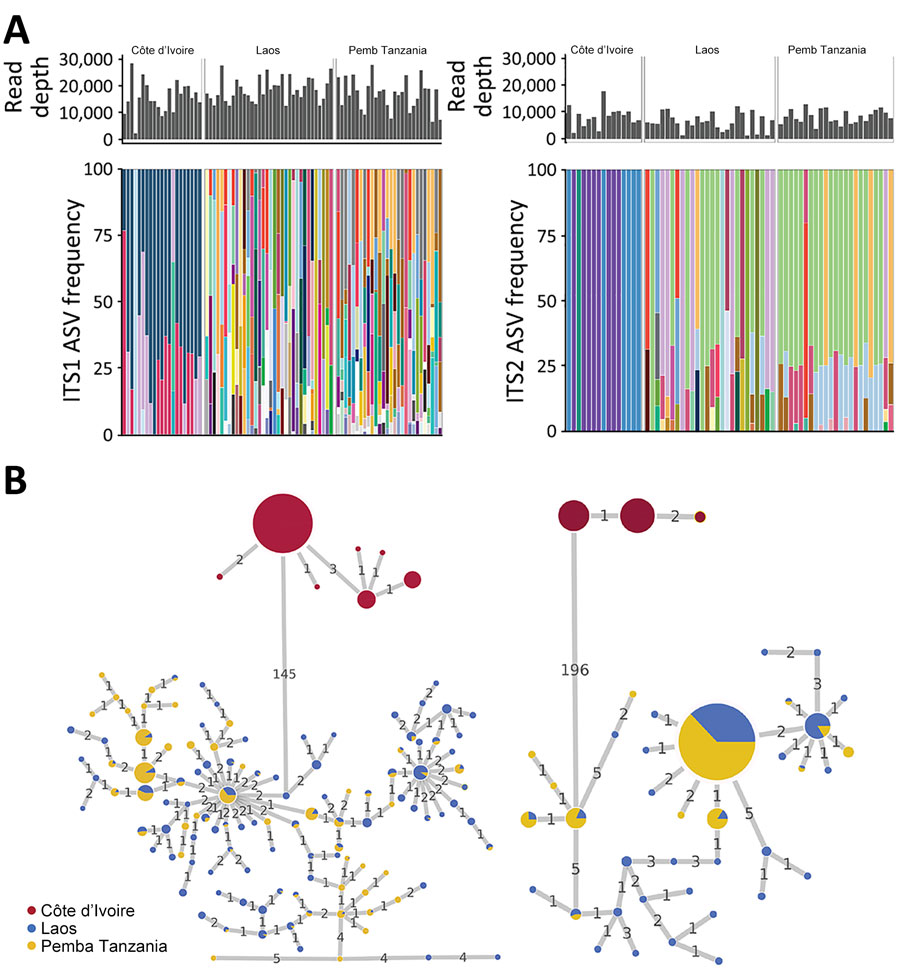Volume 31, Number 1—January 2025
Research
Trichuriasis in Human Patients from Côte d’Ivoire Caused by Novel Species Trichuris incognita with Low Sensitivity to Albendazole/Ivermectin Combination Treatment
Figure 1

Figure 1. Frequencies and haplotype networks for ASVs of Trichuris spp. ITS1 and ITS2 in study of novel Trichuris incognita identified in patient fecal samples from Côte d’Ivoire and reference sequences. A) Histograms indicate the sequencing read depths and bar plots indicate the relative frequencies of ASVs generated by amplicon sequencing of Trichuris ITS1 (left) and ITS2 (right) loci from samples collected in Côte d’Ivoire, Laos, and Pemba Island, Tanzania. Colored bars indicate similarities or differences in ASV frequencies between the 3 geographic regions. B) Statistical parsimony haplotype networks of ASVs for Trichuris ITS1 and ITS2 loci generated by amplicon sequencing of fecal samples from patients in Côte d’Ivoire, Laos, and Pemba Island, Tanzania. Colored circles indicate the region and size of each circle indicates the ASV frequency. Numbers on connecting lines indicate the number of nucleotide differences between adjacent haplotypes. ASV, amplicon sequencing variant; ITS, internal transcribed spacer.
1Current affiliation: Kwantlen Polytechnic University, Surrey, British Columbia, Canada.